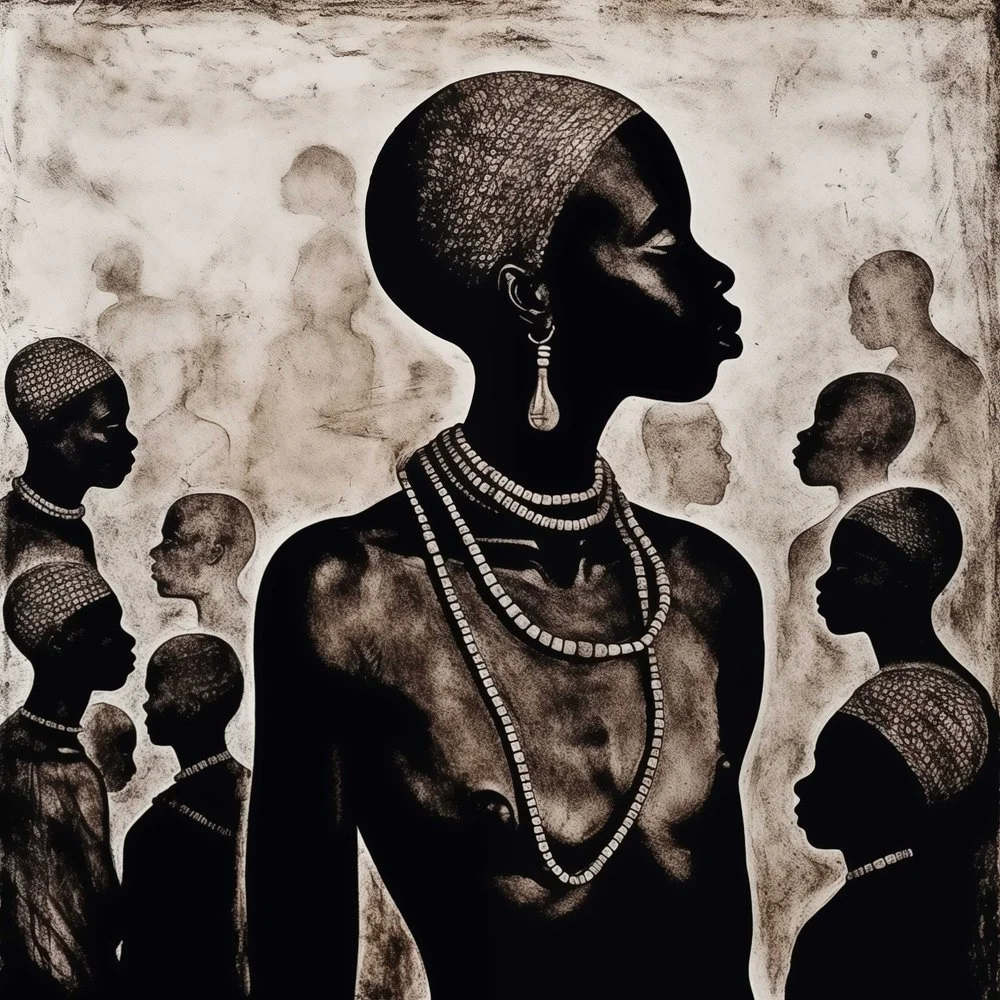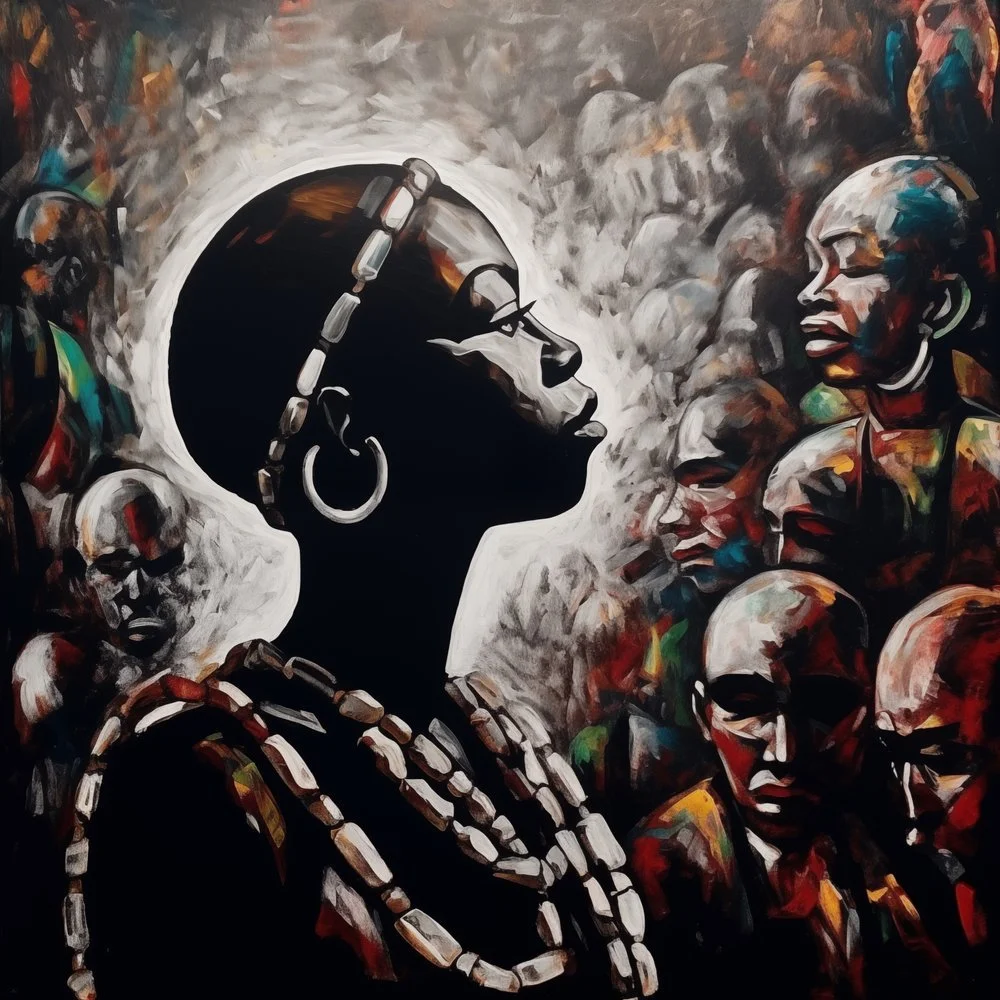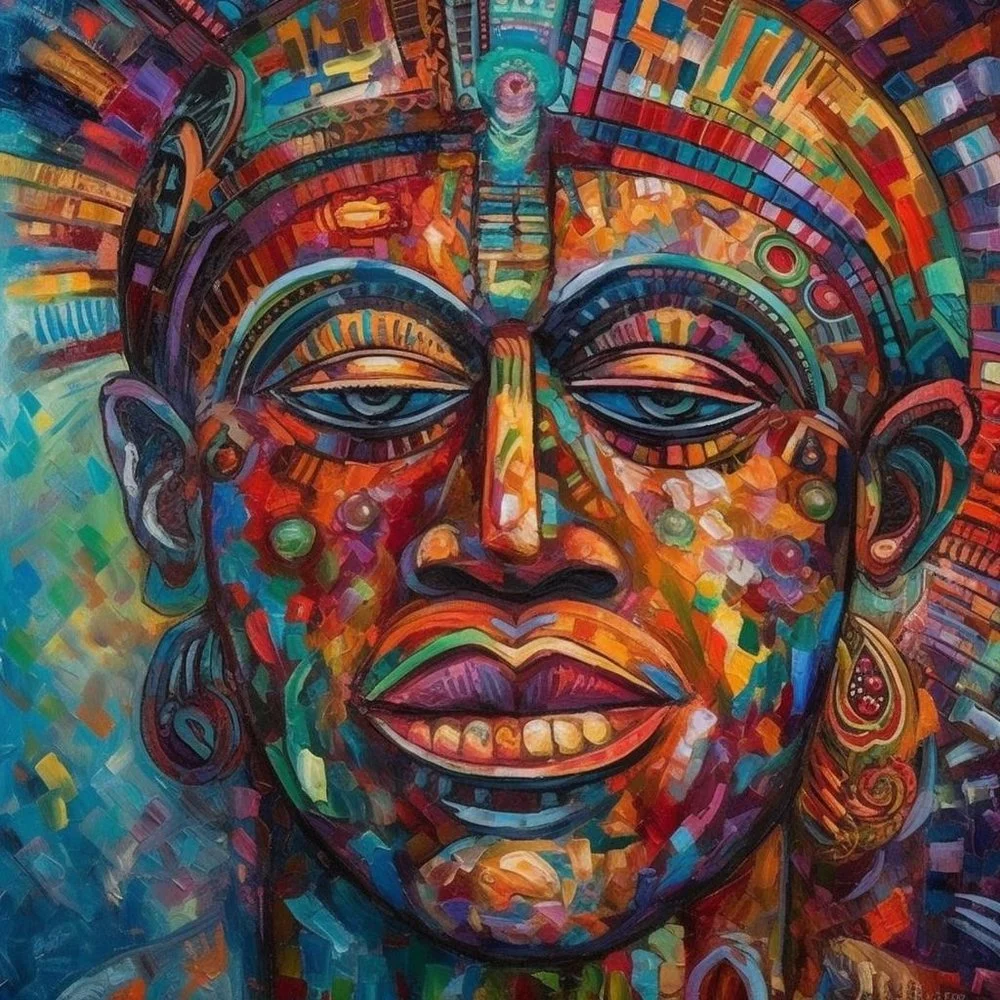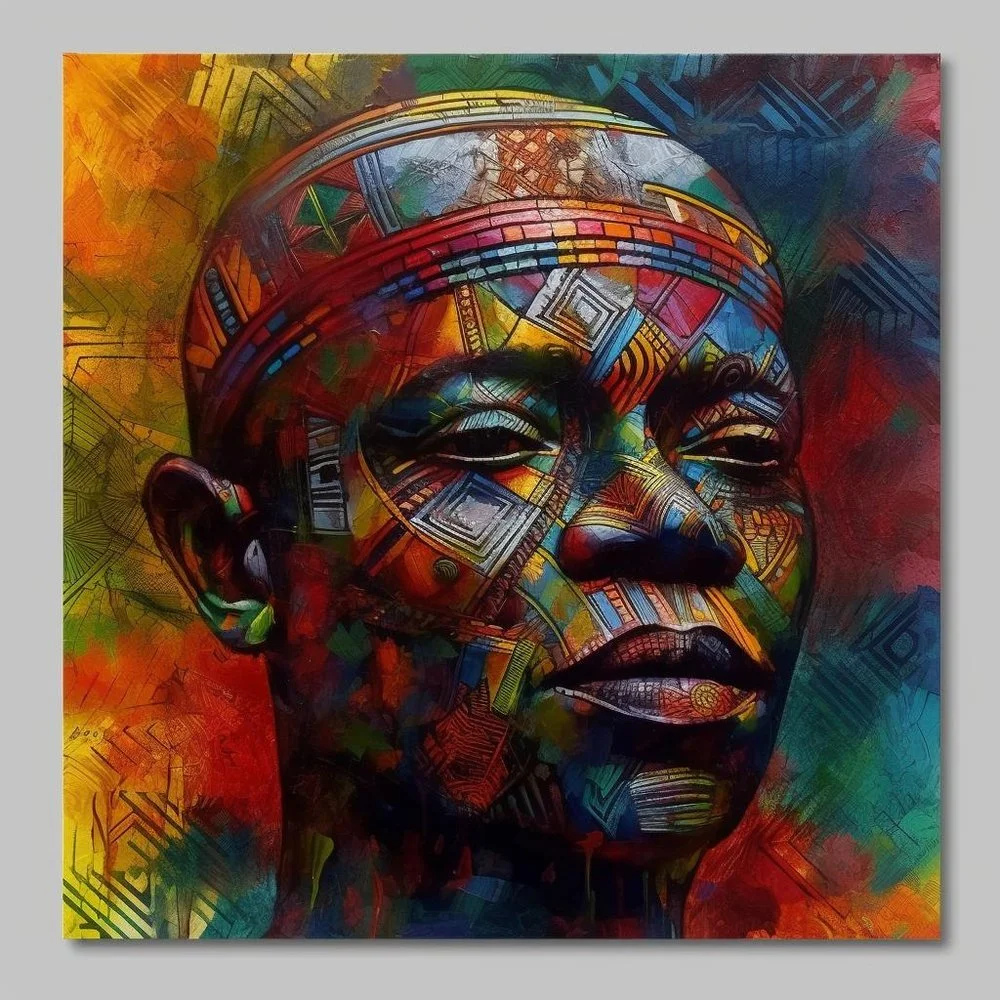Tosin Iwayemi profound insights into the African culture
Written by Ade Olusola Kunmi
Samburu
Tosin Iwayemi’s artworks delve into the rich tapestry of African features and beauty, as seen in pieces like “Samburu,” “Goddess,” “Face of the God,” and “Kanuri.” Each painting offers a unique perspective on the portrayal of African women and the cultural heritage of various African tribes.”Samburu” presents a captivating depiction of the 18th-century Samburu Tribes of Kenya. The focal point of the painting is a woman, delicately showcasing the beauty of African features.
Surrounding her are several men, seemingly captivated by her allure. This composition not only celebrates the physical beauty of African women but also hints at their central role within their communities.Similarly, “Goddess” continues to explore the theme of admiration for the traditional beauty of African women. Here, Iwayemi presents a typical African woman, revered and admired for her beauty by many men. This portrayal echoes the reverence and respect often accorded to women in ancient African cultures, emphasizing their status as symbols of beauty and strength.In contrast,
Goddess
‘‘Face of the God” diverges slightly from the previous themes, drawing inspiration from the cultural and historical arts of the Yoruba kingdom in Nigeria. Despite this shift, Iwayemi’s use of vibrant colors remains striking, drawing attention to the stoic face of the depicted deity. This painting evokes a sense of the divine, portraying an entity that transcends human existence.The exploration of African facial scarification in “Kanuri” further underscores the artist’s focus on cultural identity and beauty. This ancient practice, used for cultural identification and fashion, is depicted with a sense of pride and strength. Through “Kanuri” and “Face of the God,” Iwayemi celebrates the resilience and beauty found within African cultural traditions.
Face of god
Overall, Tosin Iwayemi’s artworks serve as a kaleidoscope of colors, offering profound insights into the African experience and the richness of ancient African cultures. Through masterful use of imagery and symbolism, Iwayemi invites viewers to appreciate the beauty, strength, and cultural heritage of African people.



